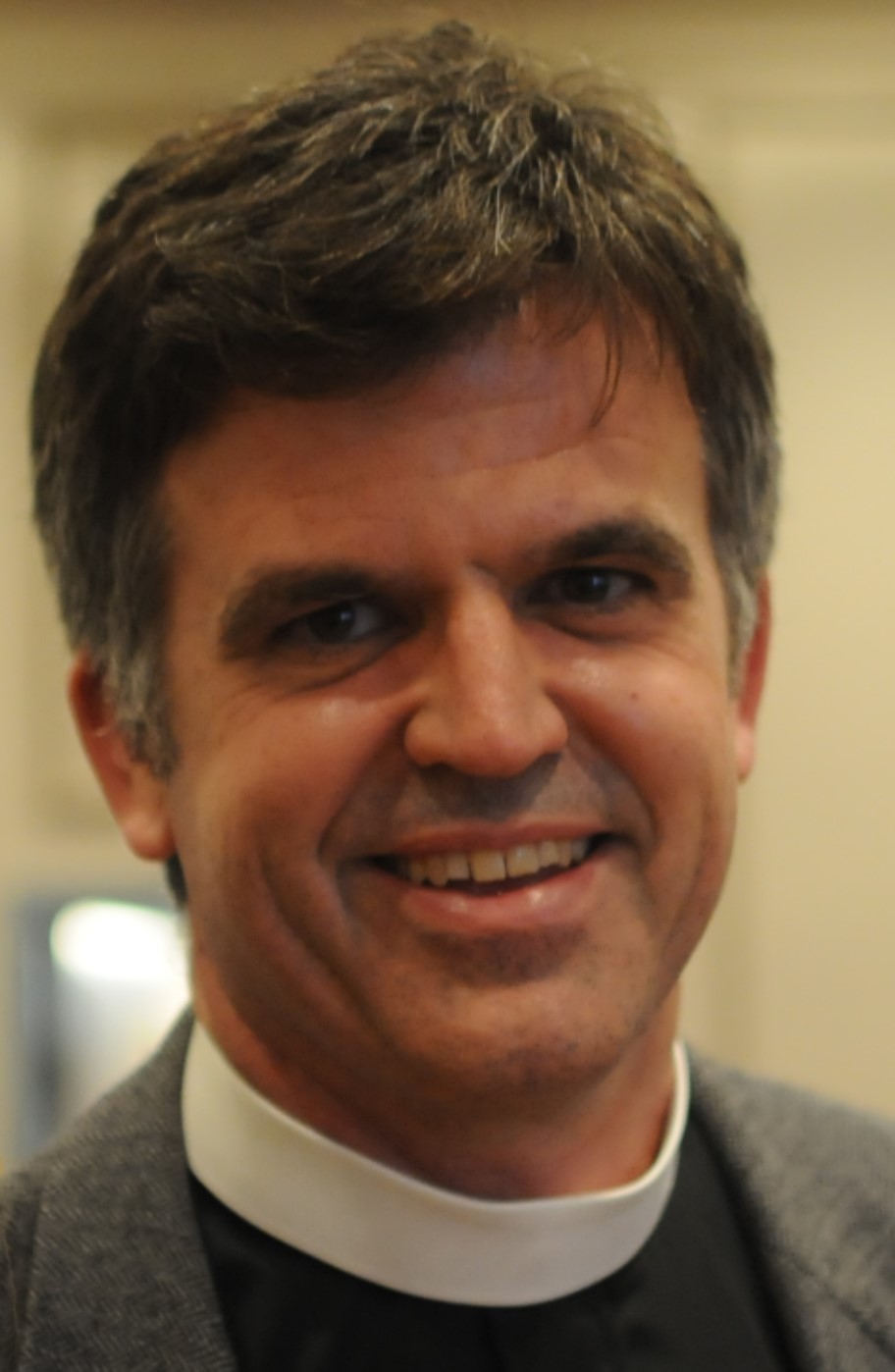No one appreciates it when the church engages in finger-pointing.
But it happens.
In fact, when we pay attention to the most common criticisms of the church, it is not uncommon to hear comments about the tendency for religious traditions to engage in finger-pointing – to point fingers of judgement and condemnation at others, and sometimes to point overly self-righteous fingers at others without pointing a similarly critical finger at ourselves.
This tendency towards finger-pointing does not only occur between the church and other groups or organizations in society. Even within the church, there can be a tendency to do a lot of finger-pointing – we point fingers at “that” individual or group that is, in our opinion, clearly undermining the work of the church; we point fingers at those “others” in the church who embrace a different perspective or conviction about some important issue. And so often, those of us doing the finger pointing at others do so because of the fact that “our” perspectives are obviously, clearly, indisputably superior to “theirs”.
Jesus himself warned us against the dangers of this tendency to want to point fingers at others, or to point to the goodness in ourselves while pointing out the failures of others. His comments about avoiding judgement, his advice to remove the log from our own eyes before seeking to remove the sliver from someone else’s, his story about the self-righteous religious official loudly calling attention to his own goodness and faithfulness, in the Temple, while simultaneously thanking God that he was not like the sinner that he was pointing his finger at – well, suffice it to say that Jesus himself did not appreciate such religious finger-pointing either.
And yet, what I would invite us to ponder, this morning, is that at the heart of our calling as the church is to be clear, confident and unabashedly courageous finger-pointers. It may be one of the most faithful things that we do.
The reason for this conviction is reflected in today’s suggested reading from the Gospel of John. The passage is set at the beginning of the Gospel of John’s account of Jesus’ life and ministry, as he came to John the Baptist at the Jordan River.
Even though people had come to the wilderness to see and to hear the Baptist’s proclamations and calls for repentance, John, in turn, directed everyone’s attention away from himself as he pointed to Jesus and declared, as verse 29 recounts it, “here is the Lamb of God who takes away the sin of the world!” or as the King James Version famously translated John’s declaration, “behold the Lamb of God”.
This title, the Lamb of God, was a name that bore a tremendous degree of meaning and significance in the Gospel of John, not least because of the role that the Lamb played, throughout the history of Israel, in processes and rituals that were performed in order to seek and to experience a saving, forgiving, reconciled relationship with God.
But John the Baptist’s declarations did not end there. He subsequently declared, about Jesus, that “I saw the Spirit descending from heaven like a dove, and it remained on him. I myself did not know him, but the one who sent me to baptize with water said to me, ‘He on whom you see the Spirit descend and remain is the one who baptizes with the Holy Spirit.’ And I myself have seen and have testified that this is the Son of God.” Jesus was, in John’s words, the Spirit-anointed Son of God.
John’s recognition and naming of Jesus were not the only examples, in this passage, of people pointing to Christ with various words about him on their lips. Rather, this short passage contains a whole list of different names that are used, by various characters, as they to pointed to Jesus.
In verse 38, we read that two of John’s disciples began to follow Jesus, in response to John’s declarations, and Jesus turned to ask them, “what are you looking for?” to which the two followers simply responded, “Rabbi,” (which translated means teacher), “where are you staying?”
And, later that afternoon, one of those who had begun to follow Christ, the disciple named Andrew who is the namesake of this very congregation, sets out to find his brother Peter, with the intent of bringing Peter to “come and see” Jesus for himself. Andrew’s invitation to Peter was accompanied by yet another title – in verse 41, we read that Andrew “found his brother Simon and said to him, ‘We have found the Messiah (which is translated Anointed).”
In these few verses, therefore, a host of names for Jesus are presented to us, as readers, by those who are pointing to Jesus. The Lamb of God. The One who was filled with the Holy Spirit. The Son of God. Rabbi. Teacher. The Messiah. The Anointed. It is quite a list in quite a short passage.
But it signals to us an important – and profoundly relevant – reminder that we, as readers, are meant to draw from this passage. That is, from the very earliest days of the Christian faith, from the very initial experiences of those who became followers of Jesus, one of the most important responsibilities of those who recognized who Jesus actually was to direct people’s attention towards Jesus, to point to Christ.
John the Baptist directed his followers focus away from himself by pointing to Christ; the first disciples started to follow Jesus because John had pointed him out to them; and they, in turn, started reaching out to their friends and family members to point others towards the One who was the Lamb of God, the Spirit-blessed, the Son of God, the Rabbi, the Teacher, the Messiah, the Anointed, the One who had come to bring life.
So it was, and so it has always been.
The calling of the Church, in every place and in every age, is to constantly point beyond ourselves to Christ, not building up our own profile, our own empires, our own egos, but instead directing people’s attention away from ourselves towards the One who we claim as Lord and Saviour.
Everything that we do – in our words, in our actions, in our individual lives, in our life together – is meant to serve this greater purpose of pointing towards the love and grace of Christ.
Everything.
Which brings us, strangely, to today – to Consecration Sunday, and to the congregational meeting of this congregation. In a few moments, we are all – ministers and elders and members and friends alike – going to be offered an opportunity to indicate our intentions and pledge our commitments about how we will use the gifts and resources that God will entrust to us, over the coming year, to support the life and work of this community of faith. And, following the service, we will gather together to make decisions, together as a people of faith, about the priorities and purposes that we will seek to accomplish with the use of those offerings.
Discussing money and finances in the church is not always an easy undertaking, even though we all know that it requires a lot of money to keep a place like this going from year to year, and decade to decade, and even century to century. But it is an important discussion to have together. We included a brief excerpt from the history of St. Andrew’s in the bulletin this morning, as a part of the weekly “St. Andrew’s Remembers” selection, from a congregational meeting in 1873 in which our ancestors made the decision to relocate the church from Church and Adelaide to King and Simcoe and to build this beautiful building in which we continue to gather. We cannot help but smile to note that the construction of the building cost just over $100,000. Suffice it to say that it would cost a bit more than that today!
But, in 1873, the members of St. Andrew’s made those decisions in faith, because they wanted this place to be a place that would provide sanctuary to all, a place that would point others to the presence and love of Jesus Christ. We inherit their legacy, and cannot help but be thankful for the decisions that they made, so long ago.
But as we do so, it is simply good to remember what the point of all of this activity is, the point of this building is, the point of the church actually is.
And it is this. Everything that we do, and everything that we have, is meant to be used to help us to constantly and repeatedly and faithfully point beyond ourselves to who Christ is and what he is calling us to be and to do in his name.
Which extends far beyond words that are spoken from a pulpit on a Sunday morning. Rather, we do so as we feed the hungry on a cold winter’s night; we do as we demonstrate welcome and hospitality to newcomers and strangers and refugees; we do so as we provide a safe place for those struggling with addictions to find encouragement and support; we do so as we offer a kind word of friendship, of grace and of encouragement to each other in times of difficulty; we do so as we provide education and guidance to the young and those new to the faith so that they, like Andrew and Peter, can come and see the One who brings life; we do so as we wrestle together with issues of moral and ethical complexity right here in the heart of the city; we do so as we celebrate with the newly baptized, and with those rejoicing in the discovery of committed love, and with those whose dreams get shattered and whose hearts get broken, and with those who are mourning the loss of loved ones; we do so, week in and week out, as we sing of God’s grace and ascribe all glory and honour to the One who is love. The point of all of these activities is actually one and the same — to be a place, to be a community, to be a people who – in all of life’s joys and all of life’s sorrows – faithfully point beyond ourselves to Christ.
Which means that the point of the church is what it has always been, right from that fateful day on the banks of the Jordan River.
To point to Jesus, and in so doing, to find the point of life itself.
Amen.






